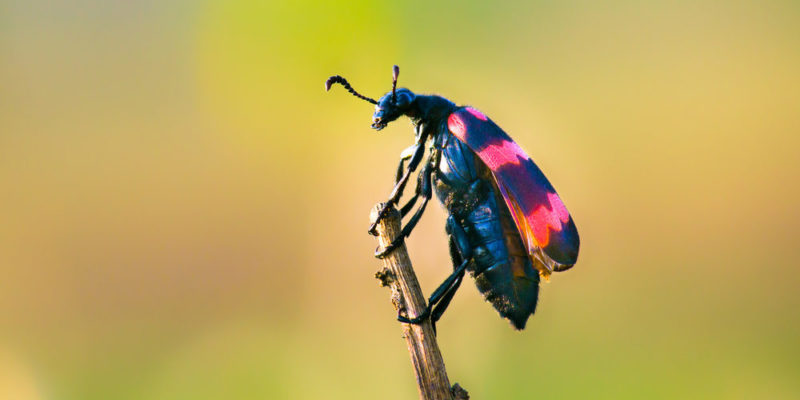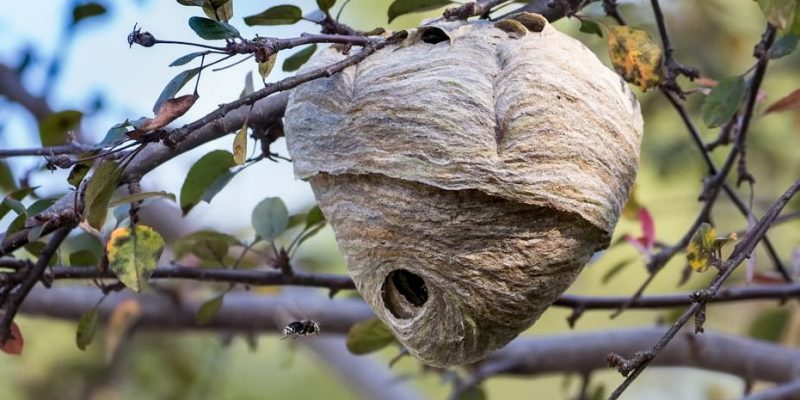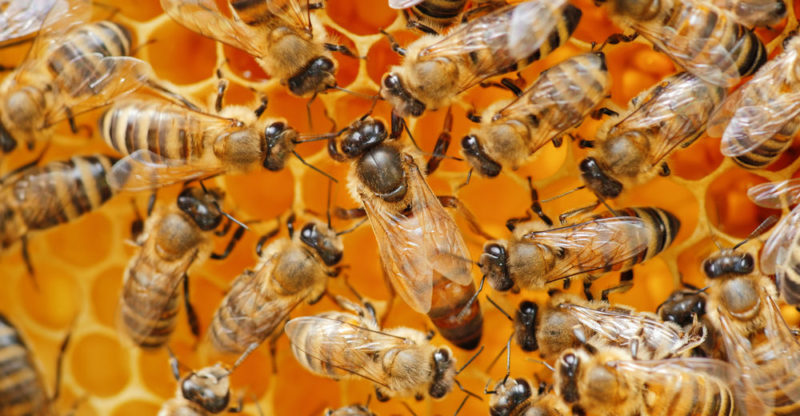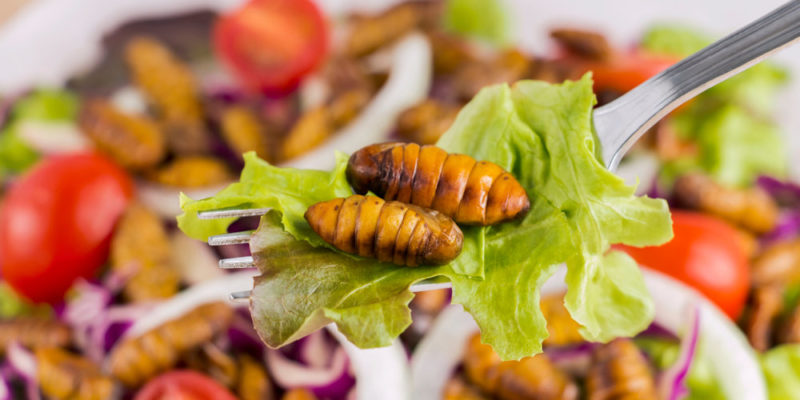We explain what insects are, what their anatomy is like and what they feed on. Also, what are its characteristics, habitat and more.
What are insects?
Insects are a class of invertebrate animals belonging to the phylum of arthropods , along with arachnids, crustaceans and myriapods .
They are the most abundant and diverse animals in the entire world, as well as the most evolutionarily successful. They represent 90% of known life forms , with more than a million known species and an estimated 6-10 million species to be discovered.
Like the rest of arthropods, insects have a segmented body with jointed legs and external skeletons (exoskeletons) of chitin, which allow them tremendous resistance and adaptability, which is why they are the largest class within the animal phylum, more numerous than exists.
Today they can be found in almost any habitat , and there are an estimated 200 million insects for every human being . Let's see, the planet is actually yours.
How did insects originate?
Insects appear in the fossil record in the Lower Devonian , more than 400 million years ago.
They survived the mass extinction at the end of that period to populate the Triassic .
The first modern families appeared in the Jurassic and then greatly diversified in the Cretaceous .
The concentration of atmospheric oxygen in those times was much higher: it occupied 21% of the atmosphere , instead of 16% today. That allowed insects to emerge much larger than those that exist today.
Insect Anatomy

Insects are distinguishable from other arthropods in their anatomy , which consists of:
- Head. In capsule form, it contains the eyes and antennae, the latter always in a single pair. The eyes, on the other hand, are usually compound and large, made up of hundreds of vision cells, circular or hexagonal. In addition, they usually have three simple eyes or ocelli on the top of the head. Its oral apparatus is adapted to its mode of nutrition, allowing it to chew, suck, chew-lick, cut-suck or chop-suck depending on the species.
- Chest. The middle region of the body that contains the internal organs and the extremities, is divided into three parts: prothorax, mesothorax and metathorax. Each one corresponds to a pair of legs (always 6 in total) and to the last two a pair of wings (always 4 in total) when they are present. In some cases there may be a single pair of wings on the mesothorax or metathorax. Not all insects fly.
- Abdomen. The posterior and most vulnerable region of the body, generally covered only above by the exoskeleton, contains the excretory and reproductive organs, as well as the viscera. At the end, appendages with different functions may appear, as in the case of bees or other poisonous sting insects.
What do insects eat?

In fact, insects were some of the first successful herbivores in the history of life, thus contributing enormously to competition between plant species.
Other insects are detritophages, feeding on waste and decaying organic matter , or using it (like ants ) to fertilize fungi that later serve as sustenance.
And many other species are, instead, predators , hunting and devouring other species of insects , small mollusks or annelids, and even small mammals and fish , such as the praying mantis .
Finally, there are also parasitic insects , which feed directly on the blood of animals. Therefore, they can be a danger to their health.
Habitat of insects

They have adapted to practically any habitat , with the exception of water , with very few species living in lakes , rivers or in the sea (on the other hand, crustaceans are essentially marine).
Many species are particularly social and build nests or hives . In them, they can live underground, inside trees or wood , or in mud structures that they build themselves.
How do insects reproduce?

Insects generally have their sexes separate and morphologically distinct from each other.
Their reproduction is sexual and they are oviparous . This means that the male performs fertilization inside the female's body (internal fertilization). The female then lays the eggs from which the larvae will emerge.
However, not all insects always mate . Those that inhabit hives, for example, tend to respond to very rigid hierarchies in which only one queen (usually one or a few per nest) is fertilized by a single male.
The queen has the function of depositing eggs incessantly , while the rest of the inhabitants of the hive take care of maintenance and feeding tasks, without ever reproducing.
Another interesting case is that of the parthenogenesis that certain insects develop . This consists of the deposition of eggs by the females without the intervention of a fertilizing male. From these eggs, females that are genetically identical to their parents emerge.
This type of reproduction usually occurs when males are scarce . However, the intervention of a male in one of the generations is necessary to provide genetic variety to the offspring.
There are also few cases of viviparism . In them, the female expels the living baby from her body (from the newly hatched egg inside) or directly in the pupal stage.
Metamorphosis

Most insects are not born identical to their parents , but must go through a phase of post-embryonic changes known as metamorphosis .
In these cases, a larva emerges from the eggs which, after a period of feeding and growth, begins the transformation into an adult or imago.
Depending on the metamorphosis process, we can distinguish three types of insects:
- Amethabolos. Those that do not have metamorphosis, but their young are identical to the adult except in sexual maturity and in size.
- Hemimetabolos. Those that present an incomplete metamorphosis, that is, whose young (or nymphs) go through different stages of gradual change, increasingly resembling the imago, without going through a pupal stage but with a last stage of more pronounced changes.
- Holometabolos. Those that go through a complete metamorphosis, as a larva emerges from the egg that is different in all from the adult, which must feed and grow until it reaches the necessary nutrients to form a cocoon or pupa, within which it will change its shape again and emerge as a mature adult. .
Classification of insects

- Odonata. Unable to fold their wings in the abdomen, incomplete metamorphosis and much more primitive, like the dragonfly or damselfly.
- Blattodea. With a flattened body of between 3 and 7 centimeters, they are omnivores and in some cases flying. Its best example is the cockroach.
- Orthoptera. Their third pair of legs is more robust and allows them to jump enormously, being able in some cases to glide or fly small distances. This is the case of crickets or grasshoppers.
- Phthiraptera. Without wings and on the parasitic life of different animals, they feed on remains of skin , blood, hair or feathers, like lice.
- Coleoptera. The most abundant order of all, with the greatest diversity and adaptability: that of the beetles.
- Lepidoptera. The order of winged insects, many of nocturnal life, of complete metamorphosis, such as butterflies and moths.
- Hymenoptera. Social insects, of complete metamorphosis and generally live in a nest or hive, where they are part of a hierarchy. Like ants.
Presence of insects in culture
 Insects and their mysterious life cycle have always intrigued the human being , who has seen in them the symbol of rebirth , of the spirit and of eternal life.
Insects and their mysterious life cycle have always intrigued the human being , who has seen in them the symbol of rebirth , of the spirit and of eternal life.Many dynastic orders of antiquity worshiped the beetle, butterfly or dragonfly , while other species have always been fought and considered harmful or dirty, such as flies, mosquitoes and cockroaches, generally considered "pests".
Other insects have been part of traditional human accounts , in which human traits such as selfless work (the ant and the bee), music and laziness (the cricket), vanity (the butterfly ), etc. are attributed to them .
In some cultures , insects are also part of the diet . However, in general human consumption is not well regarded, and its use as livestock feed, or as a tool for the production of fibers (such as silk) or food (such as honey) is much more widespread.
Ecological importance of insects
 Insects are extremely numerous and present many relationships with the rest of the species of animals and plants, on the verge of being ecologically indispensable nowadays.
Insects are extremely numerous and present many relationships with the rest of the species of animals and plants, on the verge of being ecologically indispensable nowadays.As prey, predator or simply as pollination vehicles , insects contribute to the enormous cycle of ecosystems .
Examples of insects
Some common examples of insects are:
- Bees, bumblebees, wasps and hornets.
- Beetles, cockroaches, crickets, grasshoppers.
- Dragonflies, butterflies, moths and cicadas.
- Bed bugs, mosquitoes, lice, fleas, horseflies.
- Termites, ants, ladybugs and flies.
- Taras, mantis and chipos.
The above content published at Collaborative Research Group is for informational and educational purposes only and has been developed by referring reliable sources and recommendations from experts. We do not have any contact with official entities nor do we intend to replace the information that they emit.
Abubakr Conner brings a diverse skill set to our team, and covers everything from analysis to the culture of food and drink. He Believes: "Education is the most powerful weapon that exists to change the world." .
Leave a reply
Your email address will not be published. Required fields are marked *Recent post

Sport: What Is It, Types, Risks, Features, Characteristics and Examples

Dogs: Emergence, Features, Characteristics, Feeding and Breeds

Story: Definition, Elements, Structure, Features and Characteristics

